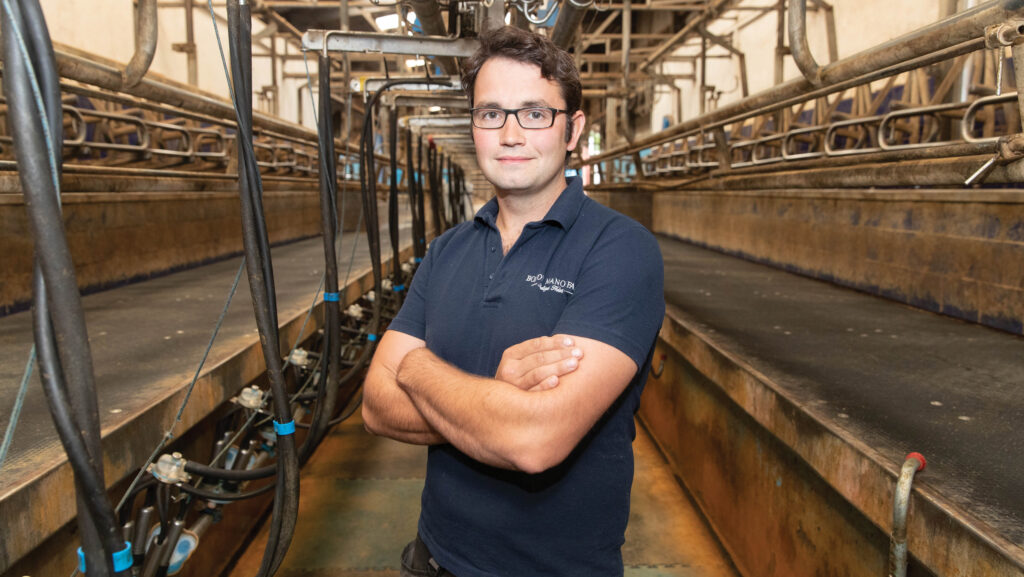Farmer Focus: Got to the bottom of twisted stomach issue
 Tom Stable © Tim Scrivener
Tom Stable © Tim Scrivener Anyone involved in dairy farming will realise you can’t let yourself get complacent. Problems you fix only stay fixed if you keep an eye on them.
Now, I’m not saying I got complacent, but from a health and production point of view, we had enjoyed our best winter so far.
Yields were good, components were improving, and we hadn’t had a twisted stomach for six months.
See also: How artificial intelligence can mitigate transition cow diseases
That all changed when we added this year’s first-cut silage at the beginning of June.
The clamp has slipped badly – it consistently has two tears across the entire face – and fairly soon after we began feeding it, we got three or four mid-lactation twisted stomachs in very quick succession.
Shortly after, the way cows were freshening deteriorated, and we got some retained cleansings, cows with no appetite and classic day five-to-seven twists. In total, we had 14.
The mid-lactation issues led us astray for a while. We believed the slipping silage had a mycotoxin problem, so we thought this was also causing the transition problem.
But eventually, when we got to the bottom of it, it turned out I had been underestimating the refusal from the transition group and therefore overestimating their intakes.
This, in turn, led to us underfeeding the calcium binder, resulting in subclinical milk fever.
In the 20 or so years I have been involved in milking cows, the role of the vet, on our farm anyway, has changed substantially. They used to treat the problems and move on.
These days, they are far more involved in what we do, visiting weekly and helping generate the protocols and develop the systems that should stop these problems in the first place.
Our vet, Andrew Crutchley from Yan Farm Health and his colleagues, along with our own team, have been brilliant, treating the sick cows and helping work out what had gone wrong.
Fingers crossed, things are back on track, and we are weighing the transitions cows’ refusals each day to monitor their intakes more accurately.
One silver lining to this very dark cloud was the improvement in milk quality we’ve enjoyed over the past eight weeks. Fats lifted from 3.6% to 4.1% and protein lifted from 3.15% to 3.27%, while maintaining yield.

